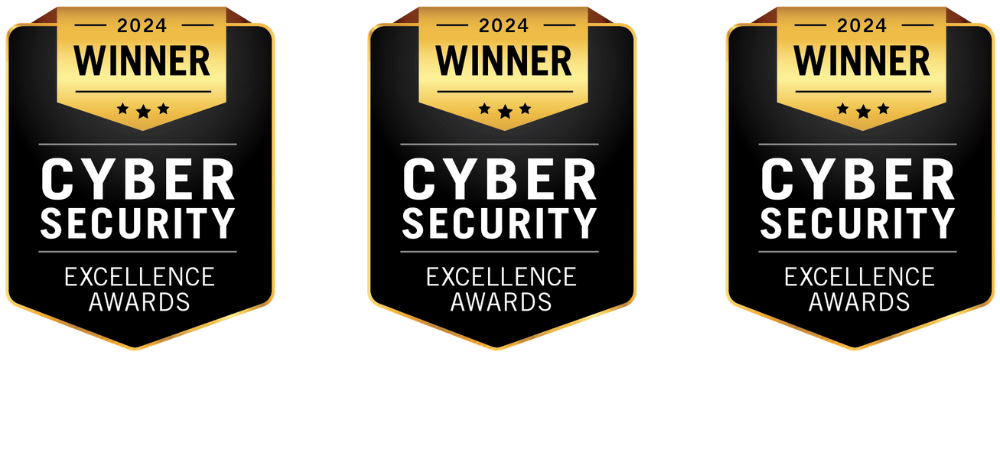The European Union isn’t asking nicely anymore.
With the Cyber Resilience Act, they’re laying down the law, literally, for how every company that makes or sells digital products in the EU must manage software security. And it’s not a gentle nudge. It’s a full-scale regulatory revamp.
From IoT to SaaS, from medical devices to smart fridges, if your product connects, updates, or processes data, this regulation applies to you.
What Is the Cyber Resilience Act (CRA)?

The EU Cyber Resilience Act (Regulation EU 2024/2847) is the first EU-wide regulation that places cybersecurity obligations on the entire lifecycle of digital products from design and development to deployment and decommissioning.
It was:
- Published: November 24, 2024
- Entered into force: December 11, 2024
- Mandatory from: December 11, 2027
And yes, non-compliance comes with teeth: penalties can reach up to €15 million or 2.5% of global annual revenue.
Why Was the Cyber Resilience Act Introduced?
Because cybersecurity can no longer be optional or reactive.
The Cyber Resilience Act is a response to:
- Rising cyberattacks on IoT and connected products
- Poor vulnerability disclosure and patching practices
- Fragmented national standards in the EU
Its goal is simple: raise the security baseline for digital products, especially those connected to networks or capable of receiving updates.
Key Requirements Under EU Cyber Resilience Act
Enterprises will be required to prove the security of their digital products through mandatory compliance documentation, technical controls, and clear communication with users.
Here’s what that includes:
1. CE Marking + Conformity Assessments
- A CE mark will now include security claims.
- For high-risk products (e.g., connected medical devices, OS software, ICS), a third-party conformity assessment is required.
2. Technical Documentation
- Must include:
- SBOMs (Software Bill of Materials)
- Threat models
- Risk assessments
- Secure design and test evidence
- This data must be retained for 10 years and be available to regulators on demand.
3. User Instructions
- Especially in B2B contexts, instructions must explain:
- How to use the product securely
- What obligations fall on the user to maintain security
How Is the Cyber Resilience Act Different from Other Regulations?
Let’s compare:
| Regulation | Focus Area | Legal Form | Industry Impact |
| Cyber Resilience Act | Cybersecurity of digital products | Regulation | All sectors |
| GDPR | Personal data protection | Regulation | All sectors |
| DORA | Operational resilience | Regulation | Financial services |
| NIS 2 | Network/information security | Directive | Critical infrastructure |
While others focus on data or sector-specific operations, the EU Cyber Resilience Act is product-centric and lifecycle-wide.
And here’s where it gets interesting: you can repurpose compliance efforts.
Example:
If your team already conducts DPIAs for GDPR, you can extend those assessments to include software vulnerability handling under the EU Cyber Resilience Act.
Who Must Comply?
If you manufacture, import, or distribute products with digital elements in the EU, you’re in scope. This includes:
- IoT devices, routers, wearables
- Embedded firmware in industrial systems
- SaaS platforms and B2B software tools
- Smart home gadgets, connected vehicles
- Medical devices (partially, if not covered under MDR)
- Mobile apps that transmit or process data
Notable exclusions:
- Pure open-source software (non-commercial)
- Products strictly used in national security/military contexts
- Products already fully regulated under MDR/IVDR
Readiness Checklist for the EU Cyber Resilience Act
Use this list to prepare your teams and products before the December 2027 compliance deadline.
1. Classify Your Products
- Identify which of your products fall under the “default” or “critical” category
- Flag critical products requiring third-party conformity assessments
- Maintain a clear internal product inventory
2. Build and Maintain Technical Documentation
- Create risk assessments and threat models
- Document secure design decisions and test results
- Generate and update Software Bill of Materials (SBOMs)
- Maintain logs of all patches and updates
- Store documentation securely for 10 years
3. Set Up a Vulnerability Handling Process
- Establish a vulnerability intake and triage workflow
- Define patch release timelines
- Track and log vulnerability disclosures and fixes
- Prepare to notify ENISA within 24 hours of any active exploitation
4. Update User-Facing Documentation
- Include secure usage instructions for B2B and B2C products
- Clarify customer responsibilities for security upkeep
- Localize instructions to meet regional expectations
5. Update Contracts and Supply Chain Agreements
- Add Cyber Resilience Act-aligned cybersecurity clauses in vendor contracts
- Require SBOMs and vulnerability disclosure practices from suppliers
- Audit high-risk suppliers for Cyber Resilience Act readiness
6. Prepare for CE Marking
- Map product development and security workflows to CE requirements
- Document pre- and post-market security actions
- Allocate budget and time for CE conformity assessments
7. Leverage Existing Compliance Programs
- Extend GDPR Data Protection Impact Assessments (DPIAs) to cover Cyber Resilience Act product risks
- Reuse DORA/NIS 2 risk logs and documentation
- Share cross-functional roles across GDPR, DORA, NIS 2, and Cyber Resilience Act mandates
8. Build an Ongoing Monitoring System
- Set up tools for real-time threat and patch tracking
- Ensure SBOMs and technical documentation are always current
- Define post-market monitoring responsibilities
Trusted by leading enterprises like, GHX, Zoho, Darwinbox, Tricenties, and SHL
Strobes helped organizations continuously manage threats, reduce vulnerabilities, and stay compliant, powered by AI-driven security expertise.
Why Enterprises Are Struggling to Keep Up
Despite the three-year transition window, many organizations are already falling behind. The challenges aren’t just technical – they’re structural, cultural, and resource-driven.
Here’s what’s causing the friction:
- Missing Standards, Moving Targets
Many of the harmonized standards required for Cyber Resilience Act compliance haven’t been finalized. Teams are expected to build towards requirements that are still evolving. - Immature Product Security Practices
Enterprises without existing secure-by-design processes or coordinated SDLC controls are starting from zero. Especially hard for SMBs and first-time exporters to the EU. - Bottlenecks in CE Conformity Assessments
For critical products, only a handful of certified bodies can perform assessments. Demand is expected to far exceed capacity as the deadline approaches. - Patchy National Guidance
As of mid-2025, over a dozen EU member states have yet to publish local implementation rules. This lack of clarity leaves legal and compliance teams in limbo. - Underestimated Time and Cost
Gap assessments, supplier audits, documentation clean-up, and staff training all require dedicated resources. Many companies have yet to allocate real budgets. - The M&A Wildcard
Acquiring a new product or business could introduce unknown Cyber Resilience Act gaps. Due diligence now needs to include security-by-design and documentation readiness.
What the European Cyber Resilience Act Really Means for Security and Product Teams
This isn’t just a regulatory change. It’s a rewrite of your product development playbook. Here’s how the Cyber Resilience Act reshapes daily reality for security and engineering teams:
◉ Security isn’t an add-on anymore, it’s a design principle.
You can’t “scan it later and patch it fast.”
European Cyber Resilience Act demands that security be part of how the product is planned, coded, tested, and shipped. That means:
- Threat modeling becomes a standard step in architecture
- Risk assessments are done before feature rollouts
- Secure-by-design isn’t just a phrase – it’s provable, documented, and CE-marked
◉ SBOMs are no longer optional.
You need a real-time inventory of every component in your software – open-source, third-party, internal.
The European Cyber Resilience Act requires you to:
- Generate and update SBOMs continuously
- Track every change in your software supply chain
- Know where every vulnerability originates, and how to fix it
This isn’t just for devs. Product managers, compliance, and security teams all need to stay in sync.
◉ Vulnerability handling must be continuous, not reactive.
The European Cyber Resilience Act doesn’t just care about what you fix.
It wants to see how fast you detect issues, how clearly you document fixes, and whether you track incidents post-release.
- You’ll need a post-market vulnerability management process
- Security updates must be timely, traceable, and reportable
- ENISA must be notified of exploited vulnerabilities within 24 hours
◉ Supply chain risk now sits on your desk.
If your software includes third-party code, you’re responsible for its security.
The Cyber Resilience Act makes ongoing supplier risk monitoring a legal obligation, not just an onboarding checklist.
- Contracts must include security update SLAs
- Vendors need to provide their own SBOMs
- You need a plan for what happens when a supplier fails to patch
◉ Product lifecycle management is now compliance-critical.
From first commit to end-of-support, every stage of your product needs a documented security trail.
You must:
- Declare a public end-of-life (EOL) date for each product version
- Show how you’ll support it post-launch
- Include lifecycle security plans in CE submissions
What Should You Do Now?
With less than two years to go, organizations need to start today.
Your Immediate Action Plan:
- Perform a Cyber Resilience Act Readiness Assessment: Identify gaps across product development, documentation, and supply chain processes.
- Define Roles and Responsibilities: Leverage GDPR, DORA, or NIS 2 compliance teams where possible.
- Centralize Documentation: Create a unified repository for threat models, SBOMs, assessments, and CE declarations.
- Budget for External Assessments: Especially if your products fall under the “critical” classification.
- Start Continuous Monitoring: Build or buy capabilities for post-market vulnerability tracking and patching.
Closing Thoughts
The european cyber resilience act is a landmark regulation. It will change how digital products are designed, secured, and maintained, not just in Europe, but globally. The real question is not whether you need to comply. It’s how fast you can transform your security practices to meet the standard.
Because come December 2027, compliance won’t be optional. It’ll be law. Book a free demo with our experts today to assess your readiness and start your compliance journey.
Related Reads:
- What is Vulnerability Management? Compliance, Challenges, & Solutions
- Strobes Penetration Testing Compliance For Audits and Assessments
- Addressing Data Protection and Compliance with Mobile Application Pentesting
- Open Source Security: How Strobes Integrates Security into Your Dev Workflow
- New CERT-In Guidelines 2025: What Every Security Team Needs to Act On Now
- Compliance: What is CERT-In?
- Compliance: Security Testing for Compliance








